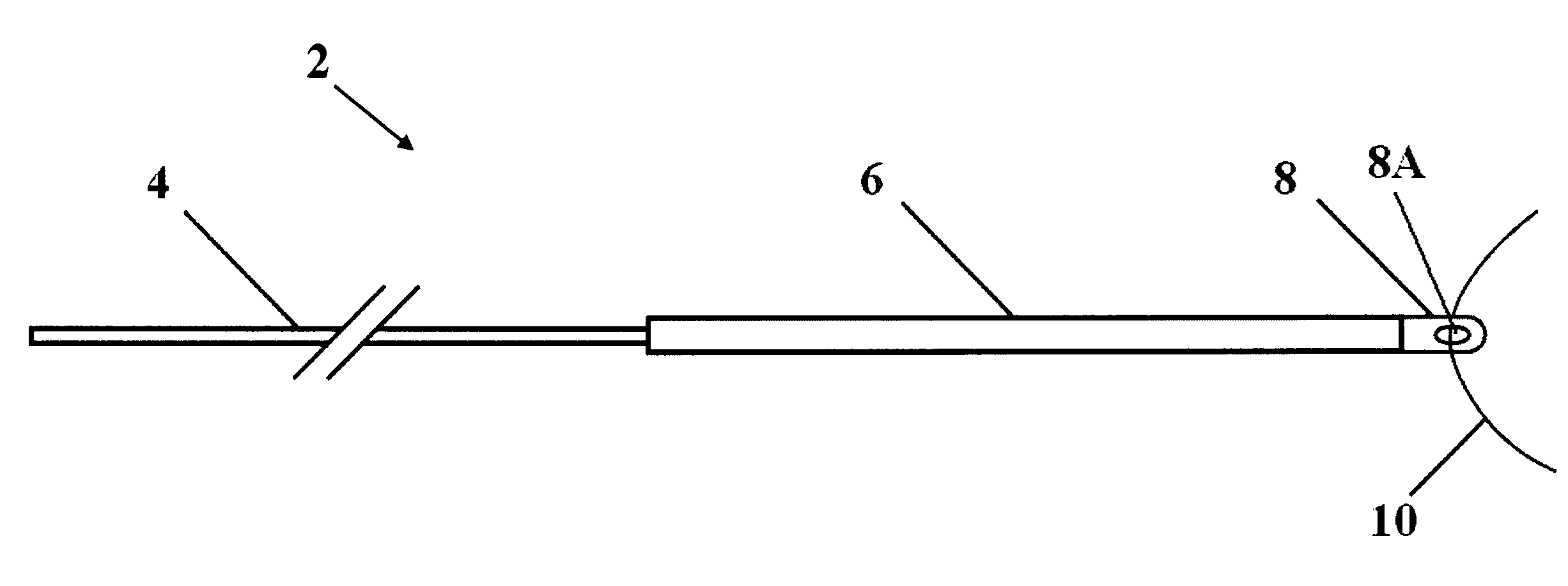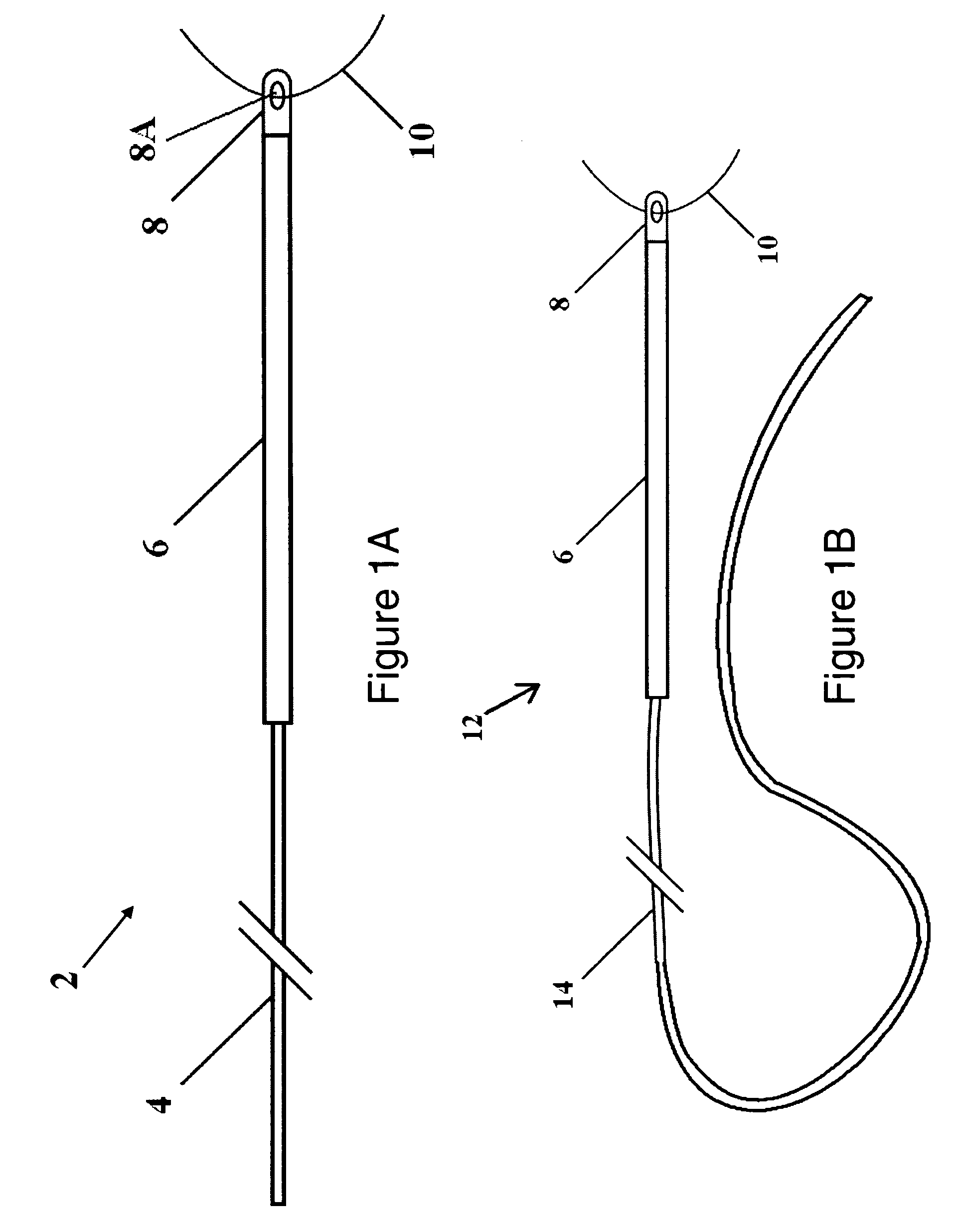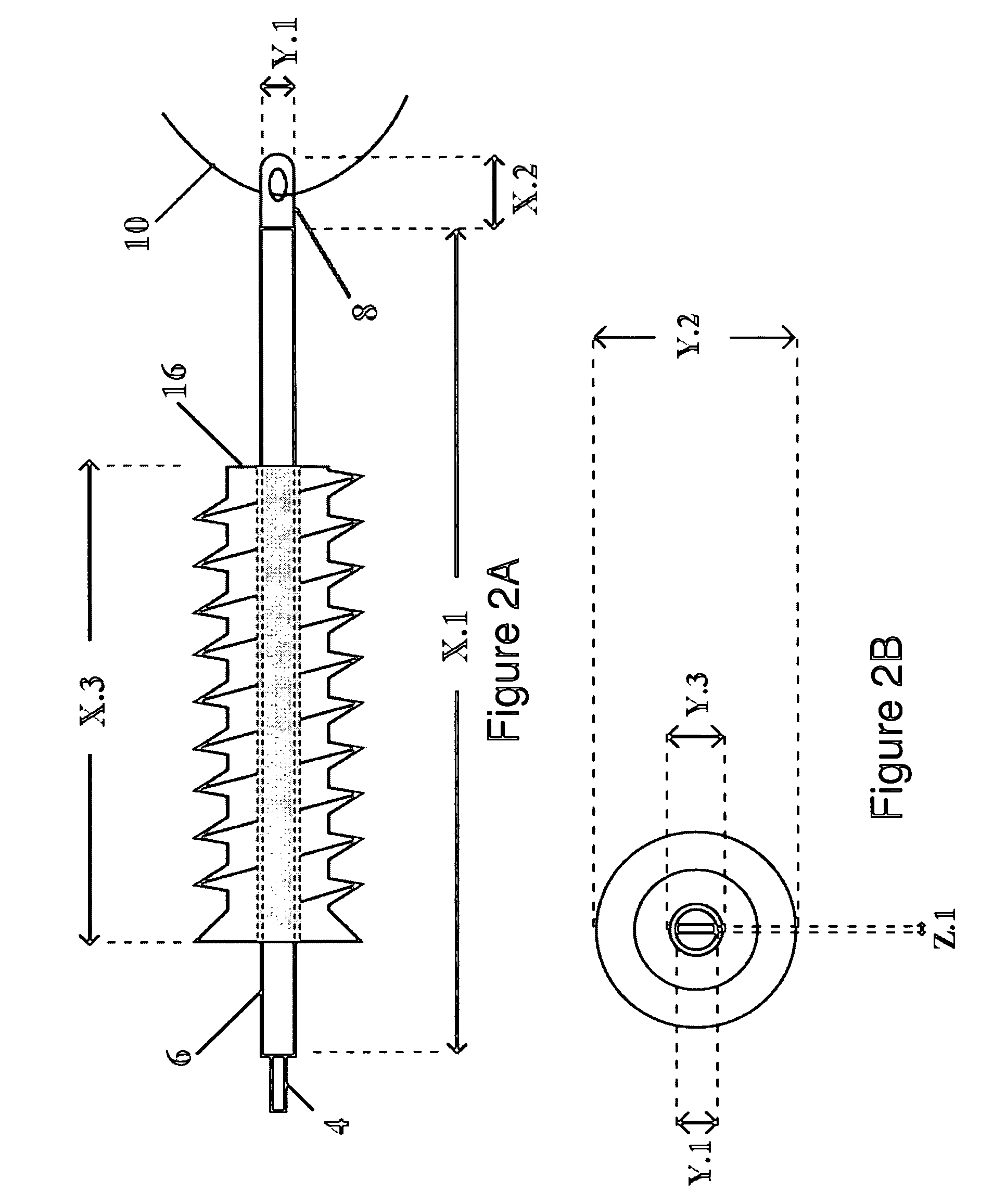Surgical device and method
a surgical device and a technology of a surgical device, applied in the field of surgical devices and methods, can solve the problems of widening the bone socket aperture, abrading the tendon or other graft material, loosening, failure or degradation of the graft,
- Summary
- Abstract
- Description
- Claims
- Application Information
AI Technical Summary
Benefits of technology
Problems solved by technology
Method used
Image
Examples
Embodiment Construction
[0047]In describing the preferred embodiments, certain terminology will be utilized for the sake of clarity. Such terminology is intended to encompass the recited embodiment, as well as all technical equivalents, which operate in a similar manner for a similar purpose to achieve a similar result.
[0048]It is understood that elements depicted in the drawings may be embodied in varying dimensions are that the drawings are therefore not presented in a particular scalar representation but as representative sizes.
[0049]Referring now generally to the Figures and particularly to FIG. 1A, FIG. 1A is an illustration of a first version 2 of the present invention comprising a nitinol guide wire shaped into a tail 4, a tip 6, and a strand attachment feature 8. The strand attachment feature 8, or first attachment feature 8, is configured with an eye 8A that is sized and shaped to allow a surgical suture or wire 10 (hereafter “strand”10) to extend through the eye 8A. It is understood the strand 10...
PUM
 Login to View More
Login to View More Abstract
Description
Claims
Application Information
 Login to View More
Login to View More - R&D
- Intellectual Property
- Life Sciences
- Materials
- Tech Scout
- Unparalleled Data Quality
- Higher Quality Content
- 60% Fewer Hallucinations
Browse by: Latest US Patents, China's latest patents, Technical Efficacy Thesaurus, Application Domain, Technology Topic, Popular Technical Reports.
© 2025 PatSnap. All rights reserved.Legal|Privacy policy|Modern Slavery Act Transparency Statement|Sitemap|About US| Contact US: help@patsnap.com



